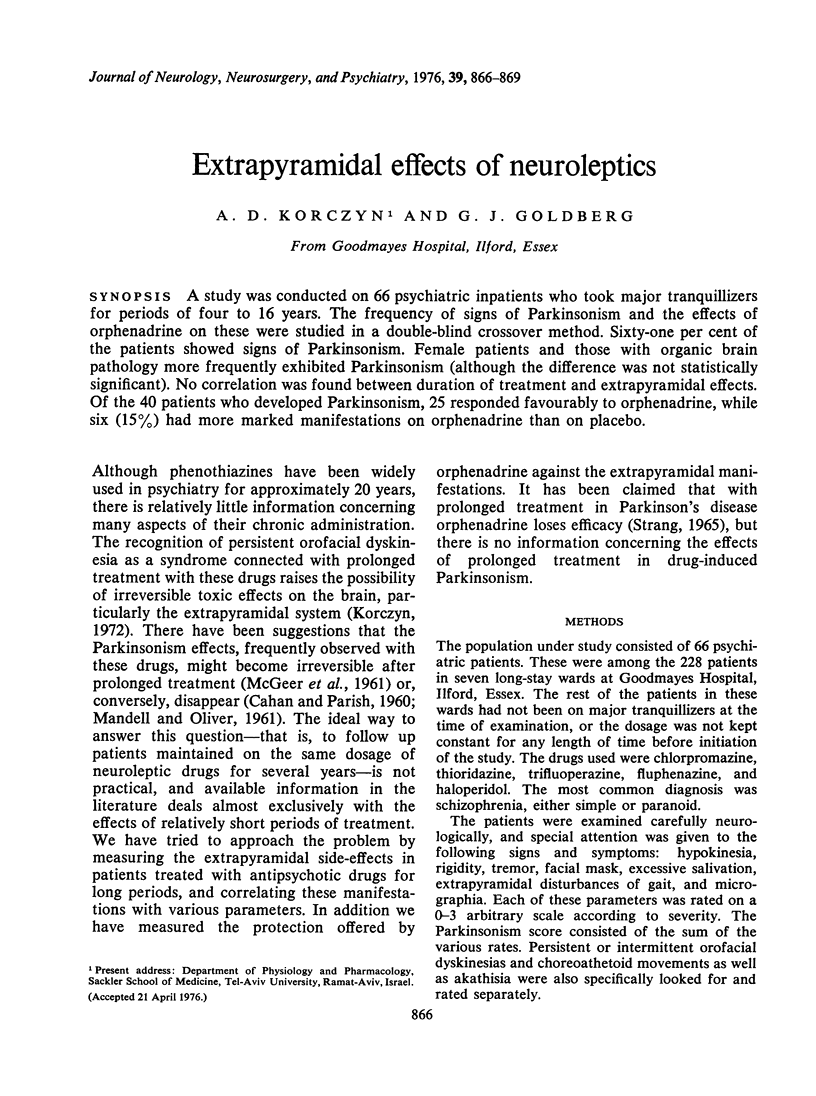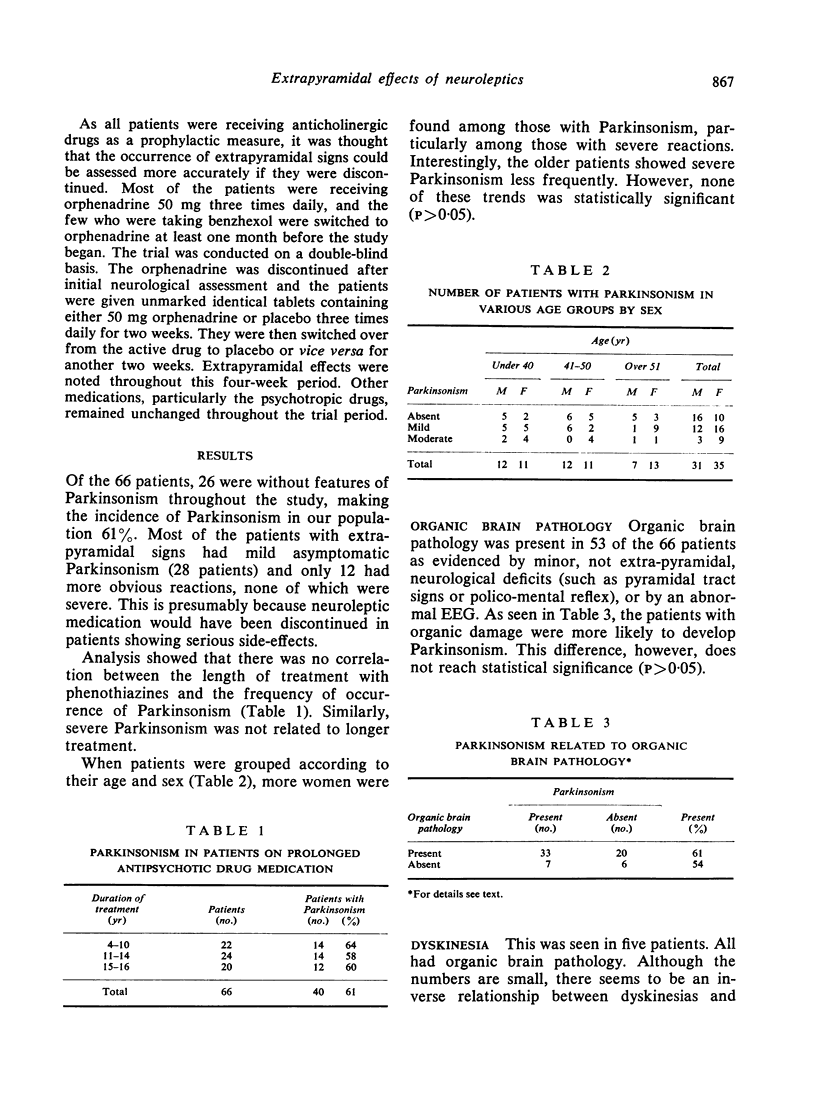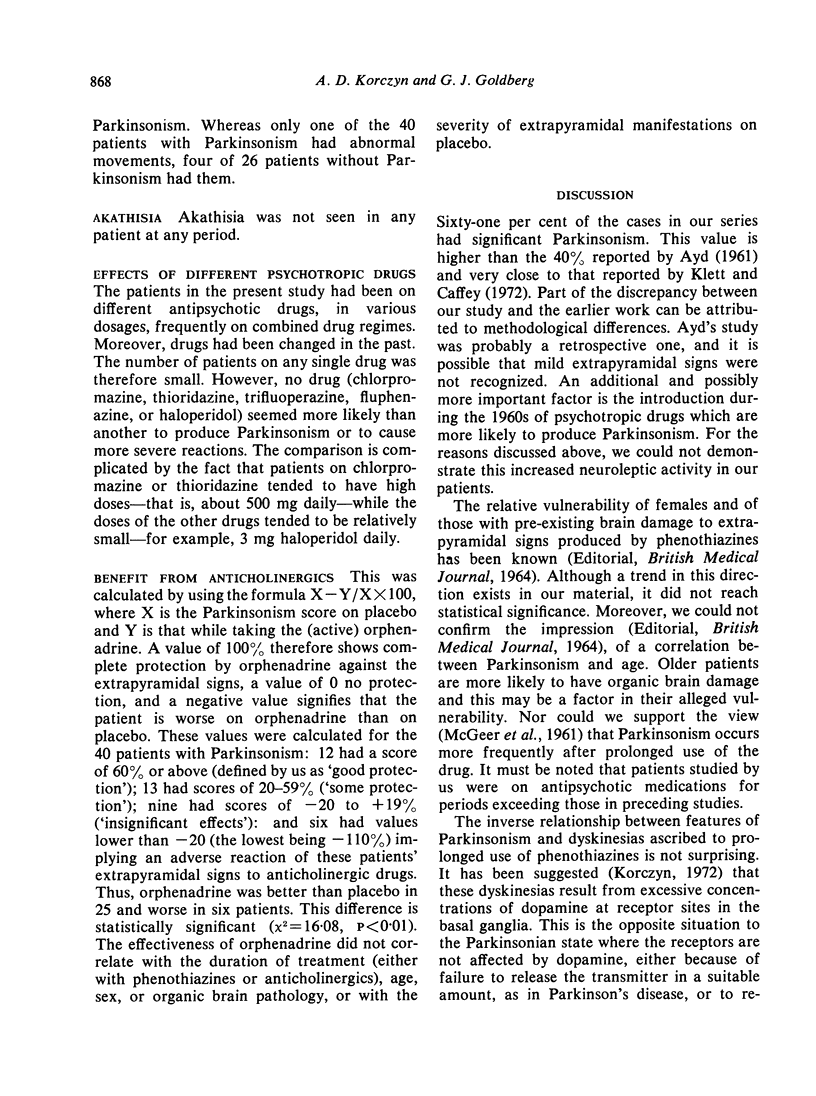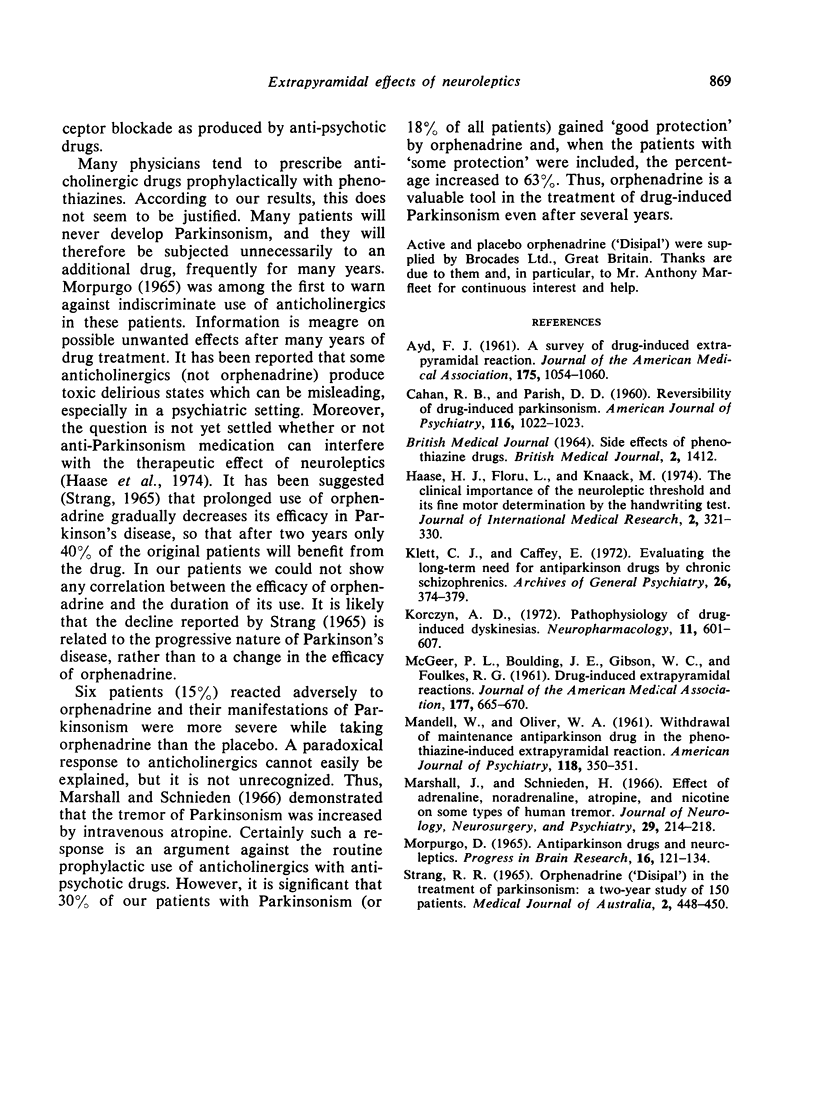Abstract
A study was conducted on 66 psychiatric inpatients who took major tranquilizers for periods of four to 16 years. The frequency of signs of Parkinsonism and the effects of orphenadrine on these were studied in a double-blind crossover method. Sixty-one per cent of the patients showed signs of Parkinsonism. Female patients and those with organic brain pathology more frequently exhibited Parkinsonism (although the difference was not statistically significant). No correlation was found between duration of treatment and extrapyramidal effects. Of the 40 patients who developed Parkinsonism, 25 responded favourably to orphenadrine, while six (15%) had more marked manifestations on orphenadrine than on placebo.
Full text
PDF



Selected References
These references are in PubMed. This may not be the complete list of references from this article.
- AYD F. J., Jr A survey of drug-induced extrapyramidal reactions. JAMA. 1961 Mar 25;175:1054–1060. doi: 10.1001/jama.1961.03040120016004. [DOI] [PubMed] [Google Scholar]
- CAHAN R. B., PARRISH D. D. Reversibility of drug-induced parkinsonism. Am J Psychiatry. 1960 May;116:1022–1023. doi: 10.1176/ajp.116.11.1022. [DOI] [PubMed] [Google Scholar]
- Klett C. J., Caffey E., Jr Evaluating the long-term need for antiparkinson drugs by chronic schizophrenics. Arch Gen Psychiatry. 1972 Apr;26(4):374–379. doi: 10.1001/archpsyc.1972.01750220084016. [DOI] [PubMed] [Google Scholar]
- Korczyn A. D. Pathophysiology of drug-induced dyskinesias. Neuropharmacology. 1972 Sep;11(5):601–607. doi: 10.1016/0028-3908(72)90068-8. [DOI] [PubMed] [Google Scholar]
- MANDEL W., OLIVER W. A. Withdrawal of maintenance antiparkinson drug in the phenothiazine-induced extrapyramidal reaction. Am J Psychiatry. 1961 Oct;118:350–351. doi: 10.1176/ajp.118.4.350. [DOI] [PubMed] [Google Scholar]
- MCGEER P. L., BOULDING J. E., GIBSON W. C., FOULKES R. G. Drug-induced extrapyramidal reactions. Treatment with diphenhydramine hydrochloride and dihydroxyphenylalanine. JAMA. 1961 Sep 9;177:665–670. doi: 10.1001/jama.1961.03040360001001. [DOI] [PubMed] [Google Scholar]
- Marshall J., Schnieden H. Effect of adrenaline, noradrenaline, atropine, and nicotine on some types of human tremor. J Neurol Neurosurg Psychiatry. 1966 Jun;29(3):214–218. doi: 10.1136/jnnp.29.3.214. [DOI] [PMC free article] [PubMed] [Google Scholar]
- Morpurgo C. Antiparkinson drugs and neuroleptics. Prog Brain Res. 1965;16:121–134. doi: 10.1016/s0079-6123(08)61397-7. [DOI] [PubMed] [Google Scholar]
- Strang R. R. Orphenadrine ("Disipal") in the treatment of Parkinsonism: a two-year study of 150 patients. Med J Aust. 1965 Sep 11;2(11):448–450. [PubMed] [Google Scholar]


